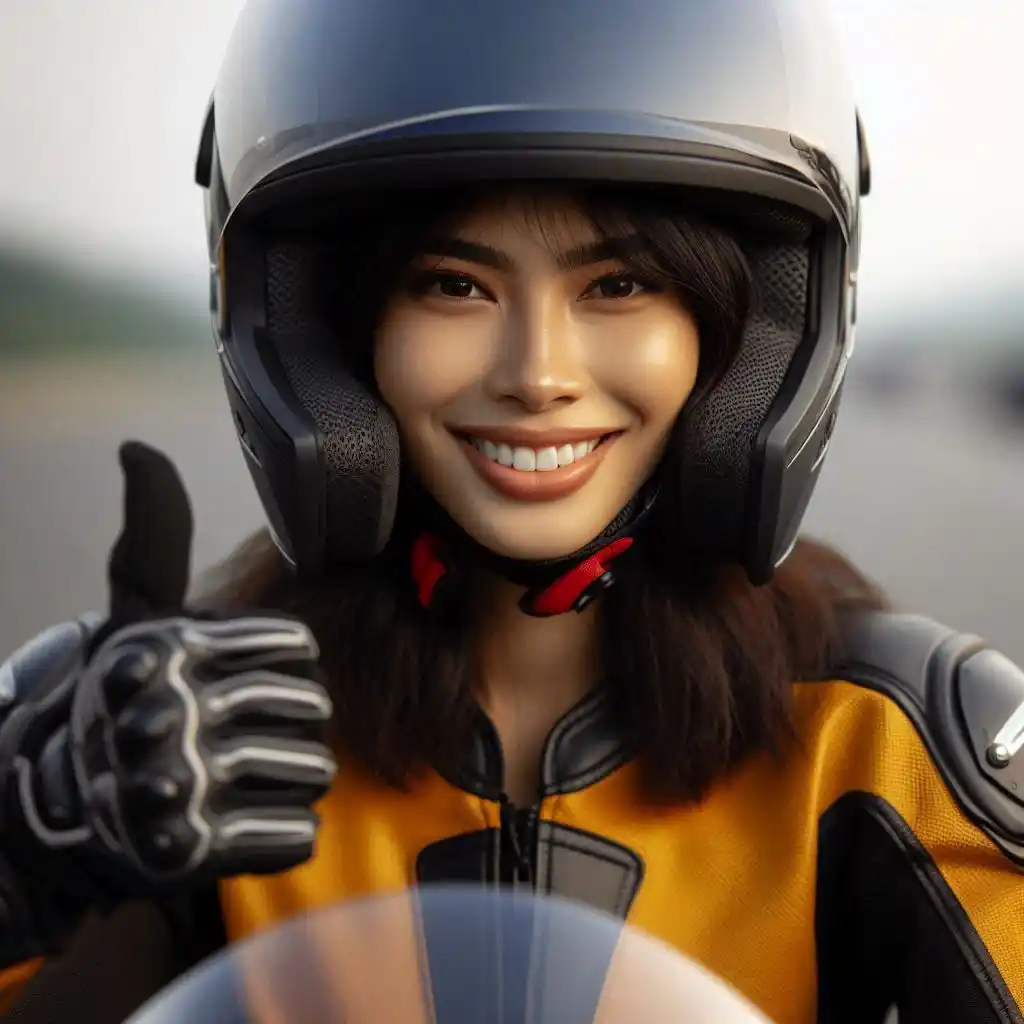
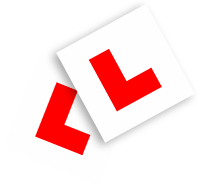
Book your
Compulsory Basic Training (CBT)
now!
Enter your postcode or town below to find your nearest motorcycle training companies and book direct with them. The DVSA recommends booking direct, not through a third party. Click here for more information.
CBTs booked last week
CBTs available now to book
locations listed
How to book your CBT test
You can find your nearest CBT test training centre by entering your postcode in the box at the top of this page. This will then show you which CBT test training centres are closest to you. If you have a specific date or dates in mind then you can also enter the date. This will then show you only those CBT test training centres that have availability on that date. You can then either contact the CBT test training centre directly to book it, or, if they offer online booking, you can book and pay for it immediately through this website.
When you have booked you will receive your booking confirmation by email. Make sure you read your booking confirmation! It will contain lots of useful information about things you need to do before your day of training. For example, reading the highway code, or if you’ve not ridden a bicycle for a while then get back on one and practise as it will really help you to balance on a motorcycle or moped.
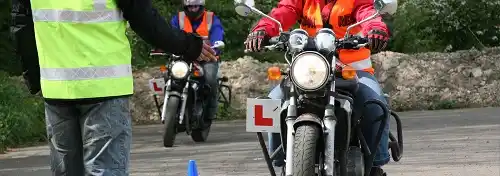
How much is a CBT Course?
The price varies depending on which motorcycle training company you take your CBT test with, but will typically be between £150 and £190. There are four main things that affect the price
- Experienced or beginners CBT. If you’ve done your CBT test before you can book an ‘experienced CBT’ which usually costs less. This is because it will be shorter as you will already have been through all of the basics. Only do this if you have done at least 1 CBT and are confident riding your motorcycle or scooter.
- Bike hire. Not all CBTs include the price of the bike hire so make sure you check if it is included in the price.
- Clothing and equipment hire. This includes your safety helmet, jacket, gloves and boots. Once again it may not be included in the price, so check first.
- Collision damage waiver. This is an insurance that will be offered to you before your training. It means that if you damage the motorcycle or scooter during your training then you will not have to pay for the repairs. It typically costs between £10 - £20 but is well worth having as repairs are much more than that.
Don’t try to simply get the cheapest price, the quality of the training is the most important thing. Quality training will one day save your life.
Q.What type of driving licence do I need?
A.A valid UK driving licence, either a full driving licence or a provisional licence. If you have a European driving licence, you must complete and send a D9 form which can be obtained from the UK Government website here. Remember to take your licence with you on the day of your CBT training!
What does a CBT Test Involve?
A CBT course consists of 5 elements labelled A to E. When learning to ride you will do these 5 elements in order throughout the day.
The DVSA have produced an excellent short video showing you the elements of a CBT. Here is the video and below it is the description of each of the elements.
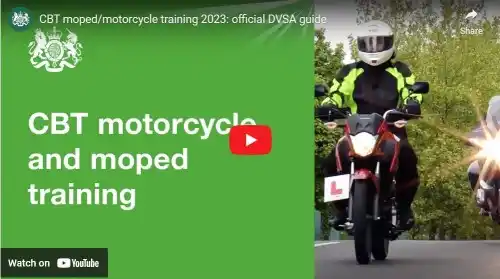
Element A comprises of talk about clothing, safety helmet and equipment. This is also when your licence and eyesight will be checked and the aims of the course outlined. Make sure to bring your glasses or contact lenses if you wear them as you will need to read a registration plate at a distance of 20 metres. You will also learn:
- Understanding the legal requirement to riding
- Reinforcing your understanding of the Highway Code to a good level
- Objectives of completing the CBT test
- Understanding the importance of using good motorcycle equipment and clothing
Element B introduces you to the machine and its controls and includes:
- Using the motorcycle stands to safely park your bike
- Familiarity with the different motorcycle or scooter controls
- Wheel the bike round to the left and right
- Starting and stopping the engine
- Carrying out basic maintenance checks
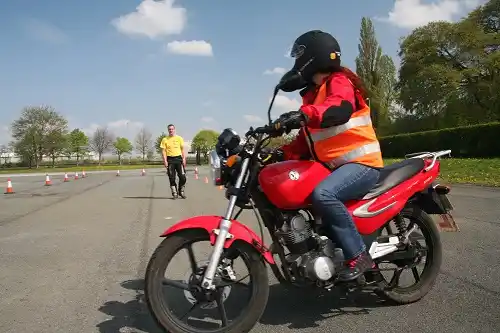 Element C is the main part of the course and takes place on an approved training site (CBT pad). This is when you will learn to:
Element C is the main part of the course and takes place on an approved training site (CBT pad). This is when you will learn to:
- Pull away, stop, start and change gears (where applicable)
- Ride in a straight line
- Ride in a slow and controlled manner
- Change gears
- Use both brakes
- Ride a figure of eight
- Carry out left, right and U-turns
- Carry out emergency braking
- Ride round bends safely
- Carry out rear observation
Element D is a return to the class room prior to going out on the road. You will get a full briefing explaining:
- The use of speed, road positioning, safe driving distances
- The importance of the Highway Code
- Your visibility on the road
- Using rear observation
- Riding at the correct speeds, road positioning and distance between other vehicles according to traffic and road conditions.
- Learning to ride whilst anticipating danger and riding defensively
- Care will also be given in explaining about the radios and how not to get lost on the road
Element E is where you put all the above into practise by doing some actual practical on road riding. You will go out on the road with an instructor two at a time with a radio link. You must do at least two hours of road tuition, which must include doing a U-turn and emergency stop. At the outset the instructor will give plenty of guidance and help, but towards the end of the time on the road the instructor will be looking to see if you can get safely from one place to another without hurting yourself or anybody else.
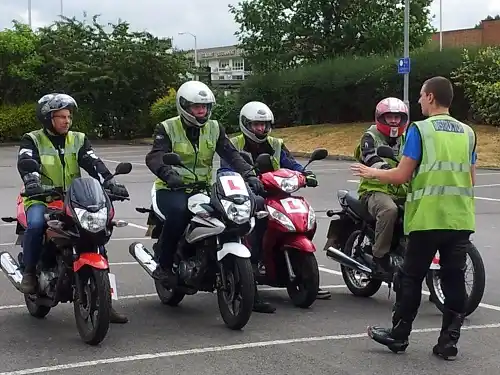
How long does a CBT Test Take?
A CBT test can normally be completed in a day, but may take longer if you need more time to master the control of the motorcycle or moped. Knowing how to ride a bicycle will really help, so if you have not ridden one for a while it's a good thing to do before you take your CBT.
Once you have successfully completed your CBT training you will be issued with a DL196 CBT certificate
If you do not complete your CBT to the instructors satisfaction then you will be asked to come back on another day for additional training. If this happens do not be alarmed or upset, some people take longer to master control of a two wheeled vehicle than others, but we all get there in the end. The most important thing to remember is it’s for your safety. Your instructor will be thinking of your safety if they ask you to come back for additional training.
What training can I do after my CBT test?
Once you have successfully completed your CBT and you have your CBT certificate you may want to go on to do further training. A CBT certificate allows you to ride only mopeds or smaller motorcycles, but with a full motorcycle licence you can ride the bigger bikes provided you are old enough. Taking your full licence will also mean you do not have to keep re-taking your CBT test every 2 years.
- For 17 - 19 year olds there is the A1 motorcycle licence. When you pass this you can ride without L plates, carry a passenger and ride on a motorway.
- For 19 - 24 year olds there is the A2 motorcycle licence. Once you've passed this you can ride any motorcycle up to 35kW (47BhP). Although the numbers may mean nothing to you there are plenty of fantastic motorcycles you can ride in this power range.
- For 24+, or if you've had an A2 licence for at least 2 years, there is the DAS (Direct Access Scheme) motorcycle licence. You have to take this test on a motorcycle of at least 595cc with a minimum power output of 40 kW. Passing this DAS test will give you a full motorcycle licence where you can ride any size of bike with no restrictions.
Any other questions?
If you still have un-answered questions then please take a look at our CBT help section that contains a list of further questions and answers.